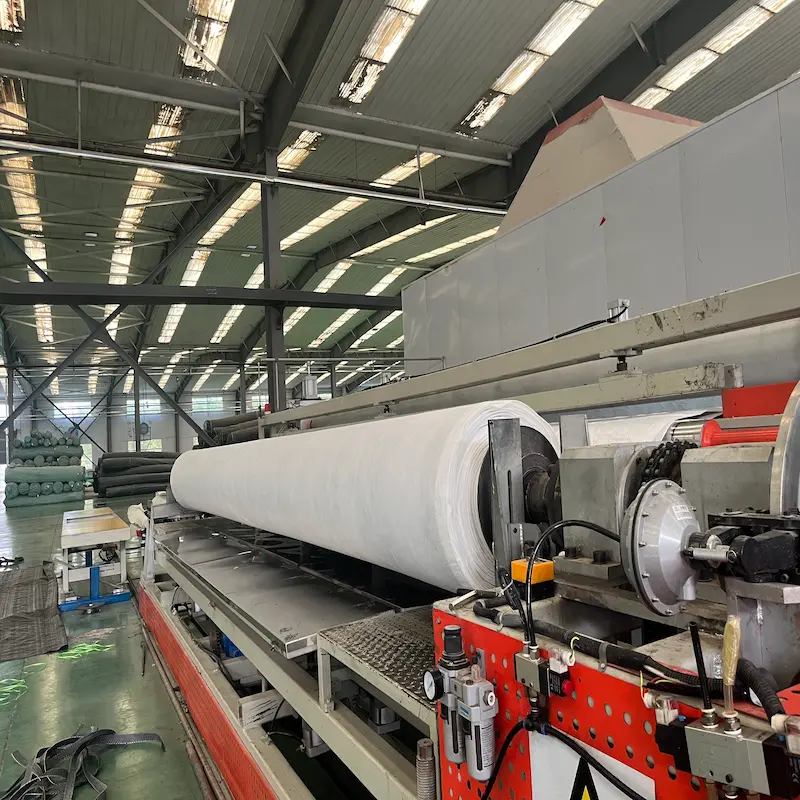High-density geomembrane and low-density geomembrane: comparison of performance and application
This article compares the performance and application of high-density geomembranes and low-density geomembranes. By analyzing the differences between the two, it provides a reference for selecting the appropriate geomembrane for engineering.
Geomembranes are commonly used waterproof materials in civil engineering, which are widely used in water conservancy, transportation, environmental protection and other fields. According to their density, they can be divided into high-density geomembranes and low-density geomembranes. This article compares the performance and application of these two types of geomembranes to help engineers choose the right materials.
1. Performance comparison
1.1 Density
The density of high-density geomembranes is usually higher than that of low-density geomembranes. This means that high-density geomembranes contain more materials in unit volume, resulting in higher strength and durability.
1.2 Price
Generally speaking, the price of high-density geomembranes is higher than that of low-density geomembranes. This is because the production process and material requirements of high-density geomembranes are higher, resulting in higher manufacturing costs. In projects with limited budgets or higher cost requirements, low-density geomembranes may be selected.
1.3 Waterproof performance
High-density geomembranes have higher waterproof performance and can effectively prevent water penetration. Their high-density structure reduces the porosity and reduces the possibility of water penetration. Low-density geomembranes have relatively weak waterproof performance and may not meet the high requirements of some engineering projects.
1.4 Strength and durability
High-density geomembranes have higher strength and durability, with better mechanical properties such as higher tensile strength, puncture resistance, and environmental stress cracking resistance. These properties enable high-density geomembranes to remain stable under greater pressure and more severe environmental conditions. Low-density geomembranes are relatively weak in strength and durability and may not meet the requirements of some engineering projects.
1.5 Temperature resistance
High-density geomembranes usually have better temperature resistance and can remain stable within a wider temperature range. This is particularly important for projects that operate under extreme temperature conditions. Low-density geomembranes have relatively poor temperature resistance and may not meet the requirements of some engineering projects.
2. Application comparison
2.1 Water conservancy projects
In water conservancy projects, high-density geomembranes are widely used due to their excellent waterproof performance and durability. They effectively prevent water penetration and protect water conservancy facilities from water erosion. Low-density geomembranes may not meet the high requirements of these projects for waterproof performance.
2.2 Road construction projects
In road construction projects, low-density geomembranes are widely used due to their relatively low price and simple construction. They can provide some waterproof effect but may not meet the high requirements of some projects for waterproof performance. For projects that require higher waterproof performance, high-density geomembranes can be selected.
2.3 Other application areas
In addition to water conservancy and road construction projects, high-density geomembranes and low-density geomembranes are also widely used in environmental protection, architecture and other fields. According to the specific application scenarios and requirements, appropriate geomembranes can be selected to meet engineering requirements.
3. Conclusion
There are significant differences in performance and application between high-density geomembranes and low-density geomembranes. When selecting which type of geomembrane to use, it is necessary to consider the specific usage needs and conditions comprehensively. For projects that require higher waterproof performance, stronger strength, and better durability, high-density geomembranes can be selected; for projects with price sensitivity or lower requirements for waterproof performance, low-density geomembranes can be selected. Through reasonable selection and use, the waterproof effect and stability of civil engineering projects can be ensured. High-density geomembranes are commonly used in water conservancy projects such as dams, reservoirs, etc., where they can provide better waterproof performance and effectively prevent water penetration. Low-density geomembranes are usually used in road construction projects or landscaping where the requirements for waterproof performance are relatively low. If there is any confusion in selection, you can also consult us for help.

280.webp)


698.webp)

(1)(1)437.webp)